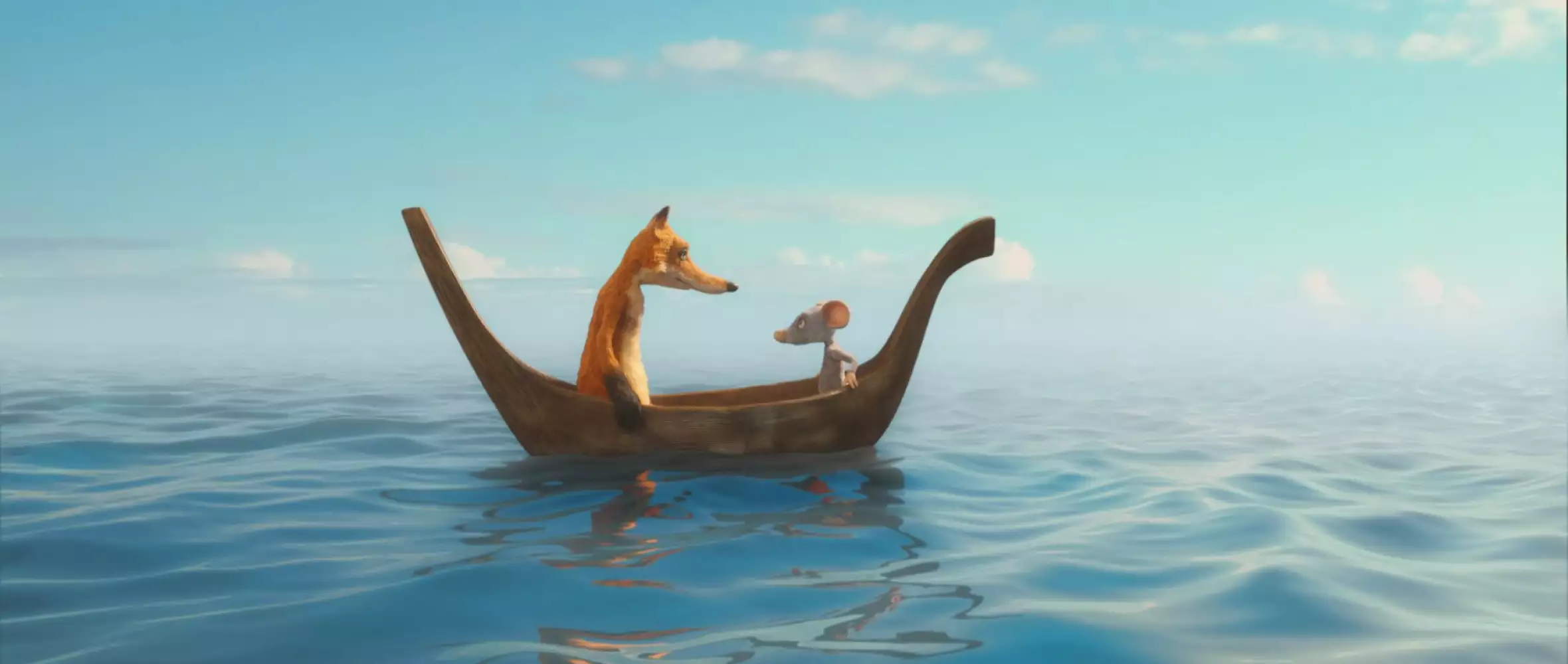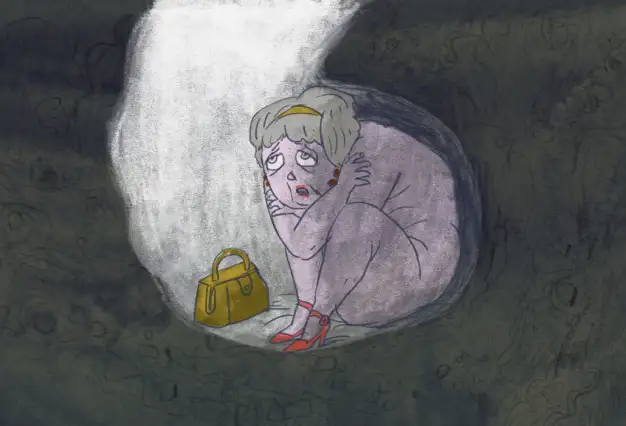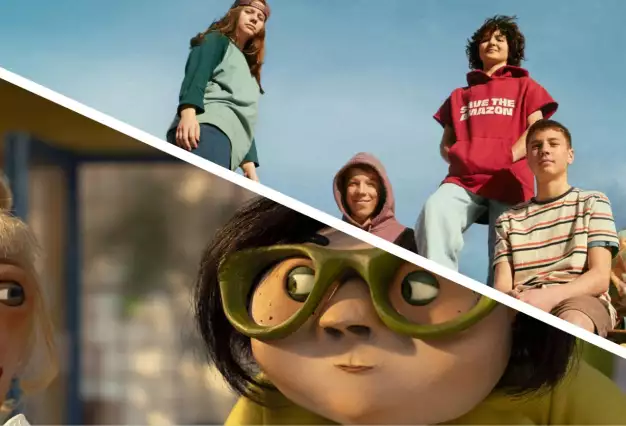
29 May 2019
Even Mice Belong in Heaven upping the ante for Czech animation
Even Mice Belong in Heaven upping the ante for Czech animation

After years in development, the ambitious puppet film Even Mice Belong in Heaven went into production at the end of last year. The gloomy corridors and rooms of the Krátký Film building at Barrandov Studio came to life, filling up with crewmembers, spectacular sets, and sophisticated puppets. The film, directed by Denisa Grimmová and Jan Bubeníček, is expected to premiere in autumn or winter of 2020. In June 2019, Even Mice Belong in Heaven will be presented as part of the Works in Progress section at Mifa in Annecy.
Article by Malvína Balvínová for Czech Film Magazine / Summer 2019
Seven Screenplay Drafts From One Book
The story of Even Mice Belong in Heaven dates back to 2010, when director Denisa Grimmová came up with the idea of adapting Iva Procházková’s 2006 book of the same name, which takes a gentle and playful approach in presenting the subject of death to children. Work on the project began in earnest in 2012, when Grimmová and the producer Vladimír Lhoták filed the first applications for development grants to the Czech Film Fund and the EU MEDIA Program.
Over the next three and a half years, the project blossomed into an international coproduction that ended up being quite broad by Czech standards. In addition to Fresh Films and Hausboot for the Czechs, Even Mice is being produced by Les Films du Cygne of France, Animoon of Poland, and CinemArt SK of Slovakia. The budget is €3,350,000, with financing from the Czech Film Fund, the Slovak Audiovisual Fund, the Polish Film Institute, and French regional funds Auvergne-Rhône-Alpes Cinéma, Grand-Est, Région Sud, and Eurimages. Coproducing are Czech Television, Barrandov Studio, and Radio and Television Slovakia, which contributed to financing with presales.
Once funding had been secured, the filmmakers set to writing the screenplay. Although departing from the original, the foundation remains unchanged: A mouse and a fox, irreconcilable enemies in life, meet again in animal heaven after an unfortunate accident. Stripped of their natural instincts, and especially their prejudices, they become best friends. Their desire to be together forever is fulfilled when they return to earth with their roles reversed.
The screenplay went through two drafts by Czech director Alice Nellis, then was further developed by Richard Malatinský. Procházková’s original book, at fewer than 90 pages, didn’t provide enough material for a feature film, so the story was expanded. Working with script editors Jiří Kubíček and Norbert Maas from Germany and the other coproducers from Czech Republic, Malatinský produced five additional versions of the screenplay over the next three and a half years.
Looking back, directors Grimmová and Jan Bubeníček (who previously collaborated on the 2016 original animated feature Murderous Tales), as well as Malatinský, said they were grateful for the input of their coproducers, even when they had to defend their ideas and find a way to compromise.
“I tip my hat to Richard, who managed to avoid hurting anyone’s ego, even when there were a lot of people commenting on the screenplay,” said Grimmová.
She emphasized that, ultimately, input from the French, Polish, and Slovak coproducers, as well as from the book’s author, the two script editors, and coproducer Czech Television, helped her and Bubeníček see the story from a different perspective. One example she gave was a coproducer who went so far as to create a chart tracking the emotions of the characters and the audience to highlight places where the characters went through a lot of emotions but, visually, audiences would be bored. They followed this process until they arrived at the final screenplay.
“We want the film to be a well-rounded experience for children and adults alike, since they focus on different levels,” said Bubeníček. “The children will be sucked in by the adventure story, but they won’t even be unaware of the more serious themes.”
Polish Mice, Czech Foxes
Even Mice Belong in Heaven features a total of 82 characters. With multiple puppet figures of the main characters — 10 Whizzies and 8 Foxes, on-screen for 90 percent of the film — that means, all told, there are 94 puppets used in the film.
Puppet animation is an established tradition in the Czech Republic, and has been since World War II. But while Czech puppet films are still made in the style of 20th-century masters Jiří Trnka and Břetislav Pojar, techniques have developed in other parts of the world, as seen in works by artists like Tim Burton and Wes Anderson. With this in mind, the Even Mice team decided to up the ante. Their puppets have more complicated skeletons than the ones typically used in Czech films, and incorporate more technology. Some are covered in fur or feathers, while others, like the frog and lizards, are made of silicone. And some of the skeleton parts were printed on 3D printers. These puppets have mechanisms that the directors hadn’t encountered before. For the animators, working with furry puppets is a special challenge, so they use a technology called flocking to keep the fur from looking sloppy. “We learned a lot in the course of developing the puppets,” Grimmová said.
The original intention was for most of the puppets to be custom-made in a foreign studio. But in the end, twothirds of them were created, along with the decorations, in the Czech Republic, in the same Krátký Film building where the shooting is taking place.
“There are advantages, mainly that we know what’s inside the puppets, so we know how to fix them,” Grimmová said. As the main artist on the film, she said she also appreciates being able to make adjustments in the process of building the puppets, as well as being able to see them alongside one another.
The mouse puppets are made in the Momakin studio, in Łódź, Poland. Grimmová said she communicates with them primarily by exchanging photographs, and all the producers have to pay close attention to make sure their puppets are fully compatible with her designs. They are then animated on sets built mainly by the puppet veteran Zdar Šorm.
Shooting at Barrandov
Observing the shoot, which began at the end of last year, you come away with the impression of a spectacular international production, operating at a world-class level. And a closer look backstage proves this isn’t just an impression. The artistically impressive puppets are animated on epic sets that often take up several square meters and are sometimes several meters high. While some parts (even whole scenes) will be created in postproduction, as is the case for any animated film, the production at bottom rests on handmade, highly developed sets — for example, a lavish cinema in the bowels of a huge whale, an underground minecart system, a burdock forest, and
a heavenly amusement park.
Crewmembers talk via walkie-talkie and travel between studio buildings on kick scooters. “We discovered we actually walk several kilometers a day through the corridors of Krátký Film,” said producer Vladimír Lhoták of Fresh Films.
The shooting takes place simultaneously on five or six sets, and there are plans to increase that to seven or eight. Working independently at each “station” is one animator who averages four seconds a day. Most of the movie is animated at 24 frames per second (fps), with part shot “on the twos,” or 12 fps. A relatively new technique for Czech puppet animation is lip-syncing, which the animators do based on dialogue spoken by U.S. actors.
“Like every animated film, ours is very precisely planned out in advance, with everything counted down to the frame. The animators have no leeway to improvise. But if they come up with an idea we like and can talk about before we start shooting a scene, then we work it in,” Grimmová said.
The director of photography on the project is Radek Loukota, and all the camera movements that are supposed to be dynamic are programmed in advance. But the filmmakers wanted to avoid the static methods that give puppet films too much of a theatrical look, so they opted for a live-action style of camera work, even though it’s more demanding in terms of time and preparation. They’re even doing the lighting with a life-action approach.
Each shot is filmed with only a slight overlap of 12 frames, so there won’t be too much work for the editor. “There’s so much precise preparatory work, even at the animatic stage, that afterwards the editing is minimal,” said Bubeníček. “The editing is done throughout. Recently we took the liberty of shooting one shot from two different camera angles, but we won’t be doing that again for a long time.”
“In animation, every second of film means hours of work. And we can’t afford that,” Grimmová said. Rigorous preparation is essential. There are far more shooting days than on a live-action film, so it isn’t humanly possible to keep the bigger picture in mind. “We go from one day to the next, and the prep work is the only thing we can hold on to.”
Filming Until Year’s End
By April, the filmmakers already had 20 percent of the footage shot. Shooting itself is expected to run until the end of 2019, with some postproduction taking place simultaneously (green-screening backgrounds, erasing puppets’ support mechanisms, retouching, etc.).
The film’s running time will be 80 minutes, with multiple language versions. Release dates will depend on the festival premiere, with distribution on the Czech and Slovak markets by CinemArt, in France by Gebeka Films, in Poland by M2 Films, and internationally Even Mice will be represented by sales agent Charades.
“We’re pleased with the puppets and sets and how they look. The people who made them are really talented,” Grimmová said about the shoot. “We’re exhausted, but we feel fulfilled.”




